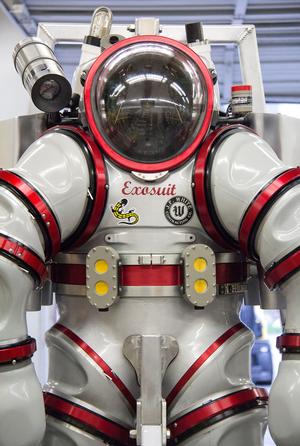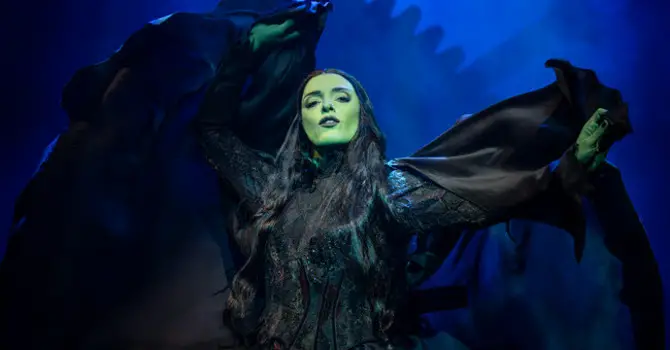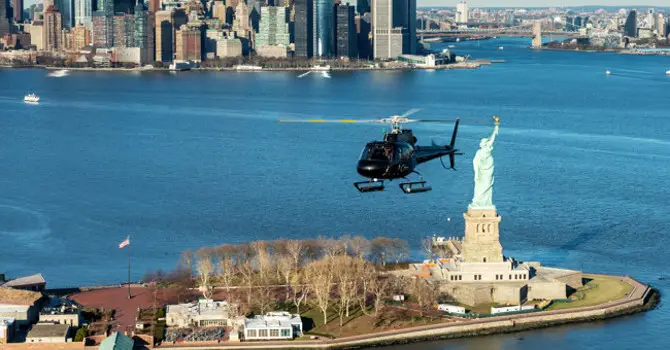Now through March 5, the American Museum of Natural History will display the Exosuit, a cutting edge tool in ocean exploration, in the museum’s Irma and Paul Milstein Family Hall of Ocean Life. Fifteen years in the making, the Exosuit is capable of taking a diver down to 1,000 feet, keeping him at surface pressure.
The suit, designed and constructed by Nuytco Research Ltd. in Canada, is 6.5 feet tall, weighs 530 pounds and has 18 rotary joints, plus four foot-powered thrusters. The suit will be used in tandem with a custom-made remotely operated vehicle (DeepReef-ROV), designed specifically to study bioluminescence and biofluorescence by taking high-resolution images of rarely seen marine life in their habitat.


Photo courtesy Nuytco Research Ltd.
This July, the Exosuit will be used for the first time in the Stephen J. Barlow Bluewater Expedition, to explore an area called “The Canyons,” about 100 miles off the New England coast. The man behind the suit will be Michael Lombardi, the Museum’s dive safety officer. He’ll be working with a team of researchers, including chief scientist Vincent Pieribone, a researcher at the John B. Pierce Laboratory at Yale University and a research associate at the Museum. “The Canyons” region goes as deep at 10,000 feet. The Exosuit will allow Lombardi and his team to conduct face to face studies, at three-to-five hour stretches, of bioluminescent fish at 1,000 feet mid-water, studying their light patterns. Previously, such studies could only be done via remote instruments.
“I’m thrilled at the possibilities of this newfound collaboration,” says Lombardi. “Merging mutual interests in ocean exploration between industry, academia, and the private sector has been a formula at work-and putting the Exosuit to work for science will unveil an entirely new realm of unexplored ocean space."
AMNH's dive safety officer, Michael Lombardi, testing out the Exosuit. Photo: Jim Clark
“Our access to these deeper open water and reef habitats has been limited, which has restricted our ability to investigate the behavior and flashing patterns of bioluminescent organisms,” says John Sparks, a curator in the Museum’s Department of Ichthyology who has led a series of marine expeditions across the globe, most recently the Museum’s Explore21 Solomon Islands Expedition.
“There are 180 species of bioluminescent [fish]. With the Exosuit, this is so much more interactive. We need to see how the species diversify in this environment. We need to see their unique flashing patterns. Bioluminescent proteins can be used to translate invisible processes in cells into flashes of light, allowing scientists to open new doors into cell function and dysfunction,” says Pieribone, the chief scientist in the Barlow expedition.
The temporary display will culminate on March 5 with a SciCafe event called “Into the Abyss: New Frontiers in Deep Sea Exploration.” The program is free and open to the public.





